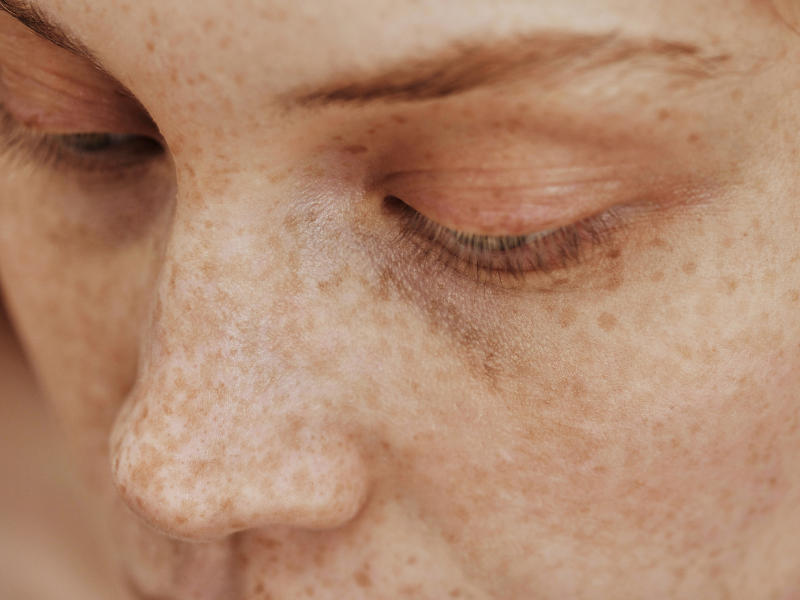It’s no secret freckles are trending! For those of us who have natural freckles, we can celebrate them even more. But for those without freckles, many are looking for a faux alternative to get the look. Recently some new information has come out about one specific method of faux freckling using henna that is concerning and we wanted to bring attention to it.
Henna is a plant-based dye that has been used for centuries to temporarily change the color of the skin, hair, or nails. Henna is commonly used in Middle Eastern, Asian, and African cultures. Recently, henna has been used as a way for non-freckled people to get temporary freckles. On TikTok, the #hennafreckles hashtag has 159 million views and the #henna hashtag has 6.6 billion views, with many of the top-liked videos showing creators using henna to paint freckles on their faces.
With this rise in the use of henna, some people have spoken out that this may be a form of cultural appropriation. The main concern is that henna has a deep cultural significance and it is being misused by those who do not belong to the culture which discredits the significance of the cultural uses of henna.
The idea of faux freckles is a bit complicated, because many people of all races have been bullied for their freckles, but now that it’s trending, it’s seen differently. This coupled with the fact that people of color have been mocked and bullied for their cultural use of henna, makes this a slippery slope.
This is not to say that henna freckles can’t be done, or that henna can’t be used by anyone who is not Middle Eastern, Asian, or African. It’s more about understanding the significance of the practice of henna and acknowledging that.
In an article from Insider, Sunaina Maira, a professor of Asian American Studies at UC Davis in California, explains that cultures borrow from one another all the time, particularly in fashion. But, it’s still important to consider who is profiting from these trends. “I think one has to challenge this debate and push it further by talking about things like who is making money from this, and who is getting left out, because those are the things that are harming people,” she said.
If henna is being purchased from or done by people who share its rich culture, it’s keeping things “more connected to the root of the cultural practice,” says South Asian TikToker Lekha Nettem.
Another thing to consider is the quality of the henna which Nettem touches on in her video. With henna becoming more popular, there have been reproductions that are filled with chemicals and can be quite irritating to the skin. Authentic henna is a plant-based dye, so by buying from POC and POC-owned businesses, you can ensure you are getting something skin safe.
Faux freckles may be a hot trend, but at the end of the day, they aren’t worth stepping all over the practices of another culture. If you want faux freckles, try one of the many faux freckle methods out there, and if you’re a redhead blessed with freckles, flaunt them.
RELATED POSTS:
READ: How to Get Faux Freckles Without Damaging The Skin
READ: 5 Facts About Freckles You Probably Didn’t Know
Rock it like a Redhead!



